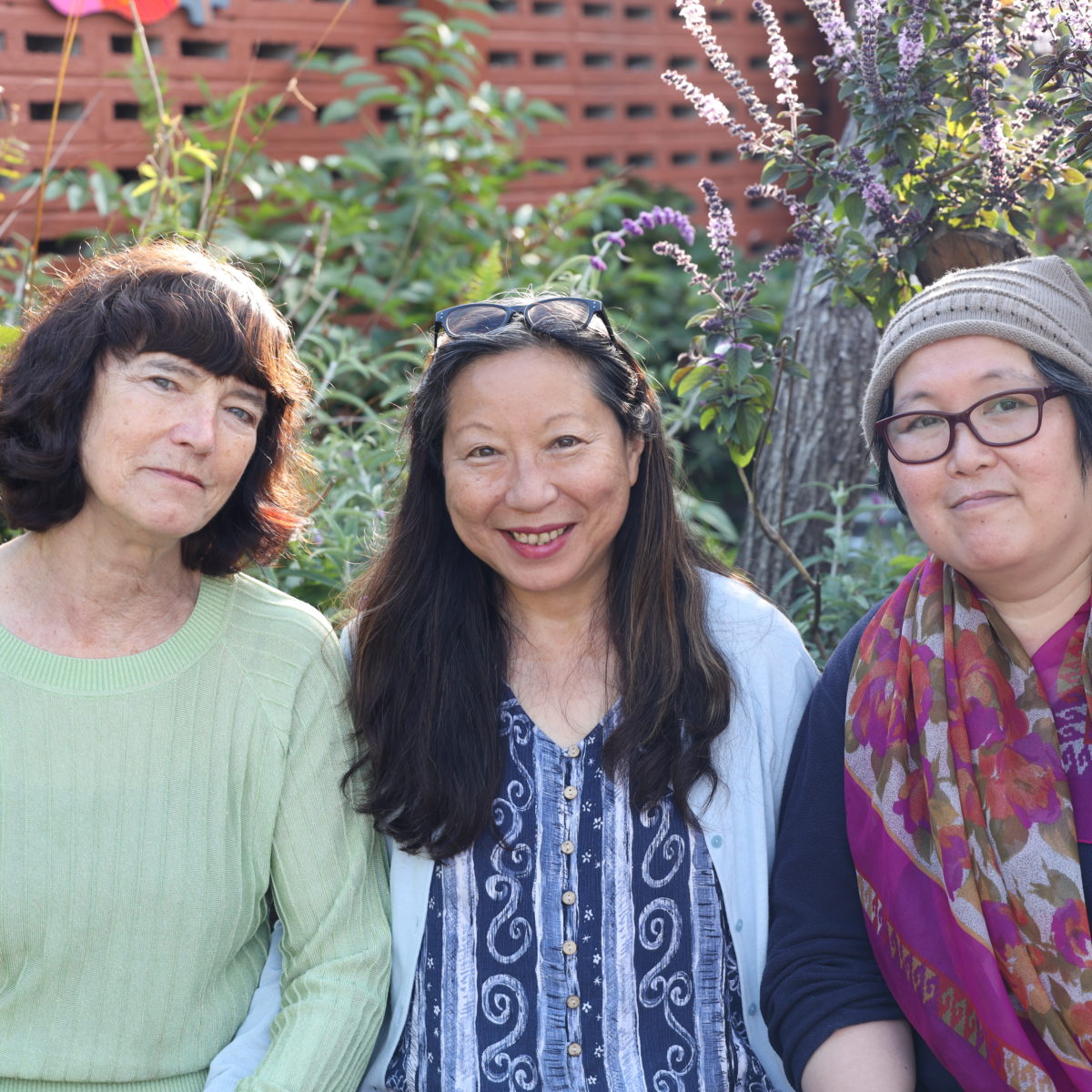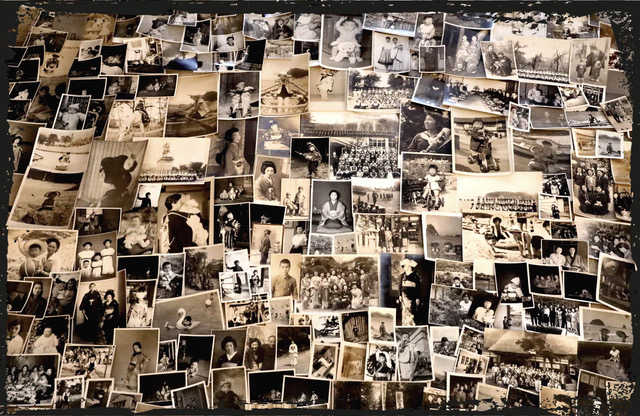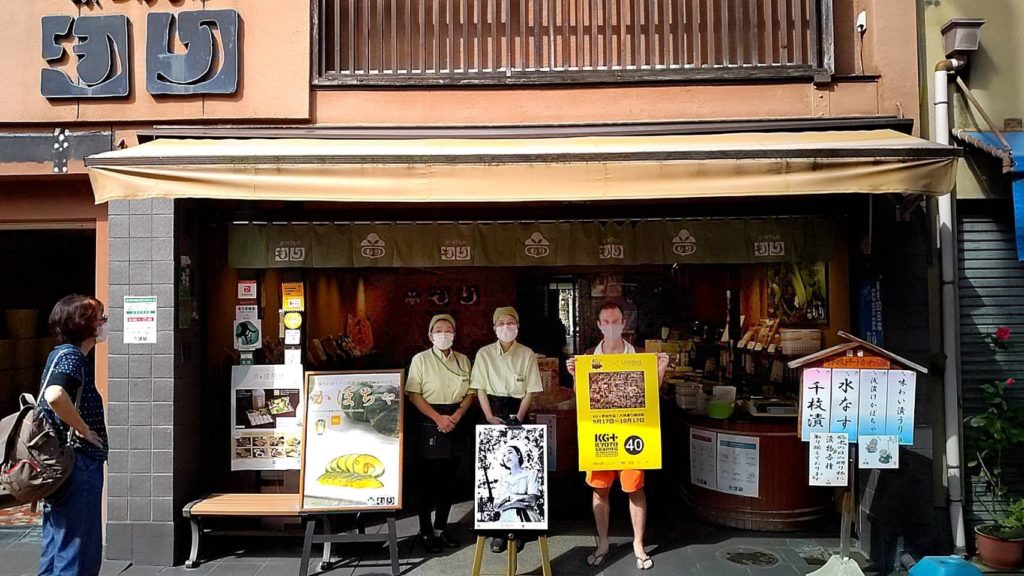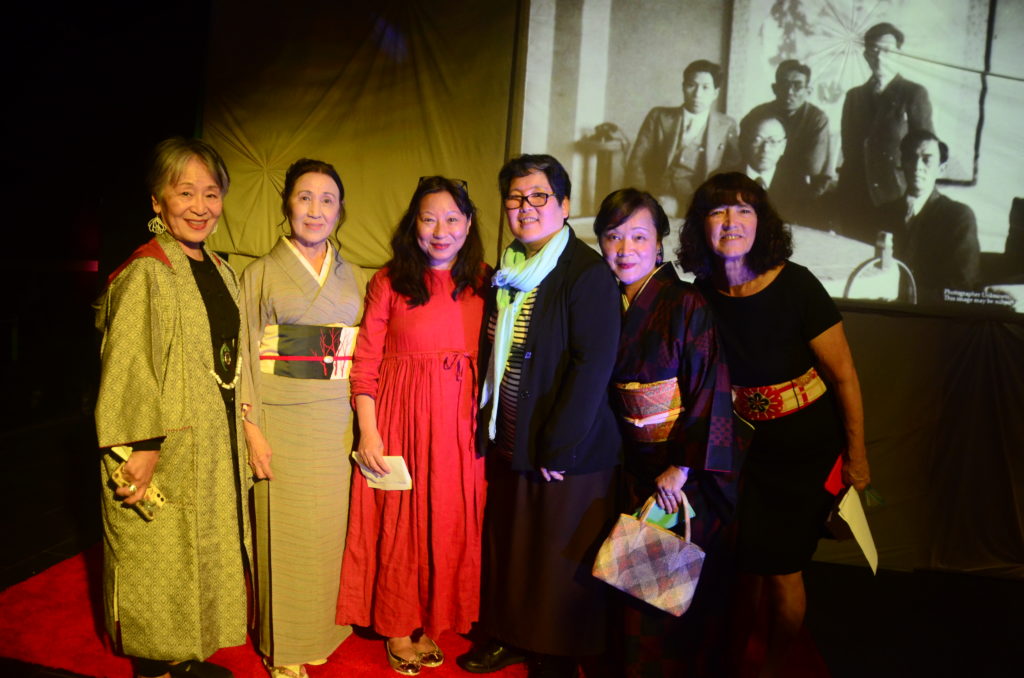#078
Untitled.Showa
A project for making new meanings and solving a mystery through found photographs
Interview + words Fay Edwards

It was a gathering, a reunion of sorts. Up on the rooftop garden of 107 in Redfern, Mayu, Chie and Sandy came together in person for the first time in months to discuss their collaborative exhibition ‘Untitled.Showa’. Above the burble of water in the pond and a sun gently slipping behind us, we spoke about their collective efforts to bring to light a series of photographs taken in Japan between the 1930s and 1960s. Found by Mayu at a fleamarket in regional Victoria, these photos captured Mayu’s attention and grew into an artwork that straddled virtual and physical worlds, traversing between Australia and Japan during a pandemic that effectively rendered most of us homebound and insulated.
By digitising a selection of these photos and exhibiting them physically and online, Untitled.Showa engaged the public in a journey to identify the photos and their origins. Through exhibitions, workshops, social media and an online platform, Mayu, Chie and Sandy have been able to piece together, bit by bit, the story of these photos.
Untitled.Showa is in part a literal fact-finding mission, a curious and compelling story of lost photos that are found and returned. It is an exhibition that tussles with the real-life issues of copyright and ethics – of who ‘owns’ an image – or of where a photo really belongs. But it is also a retelling of the past that engages and interacts with the present, transforming black and white photos into a story not only of our cross-cultural history, but of nostalgia, loneliness, family, loss, and love.
Mayu Kanamori
Mayu is an artist born and raised in Tokyo, who has lived in Sydney since 1989. Starting off as a photographer for newspapers and editorials, Mayu now creates art in many forms including plays, blogs and poetry, as well as visual and collaborative performative works using photography, sound and text. Mayu is the facilitating artist of Untitled.Showa.
Chie Muraoka
Chie was born in Japan but now lives in Australia, where she works as a production and web designer and editor. She also runs her own web development and design business called Tramindo. Chie is the web designer, developer and master of Untitled.Showa, and has liaised between languages and countries to make the exhibition happen in Japan.
Sandy Edwards
Sandy was born in New Zealand but has since made a life in Sydney. Sandy started off as a freelance photographer and artist. She has since co-directed STILLS Gallery in Paddington, Australia’s most successful photographic gallery, and founded ‘Arthere’, a new gallery model that provides services for photographers to succeed in the art world. Sandy has curated and produced Untitled.Showa.

Interview
Fay: So, the photos. How did you come across them?
Mayu: I found the photos in regional Victoria about six years ago. I had been looking for photos by the Japanese Australian photographer Yasukichi Murakami, but instead came across these ones. There were six bags – 340 photos – all depicting a Japanese family, some travelling around the sites of Japan. I was curious about the origins of the photos, but at the time didn’t know what to do with them.
Mayu: When the pandemic hit, Chie and I spoke about what we could do with the photos. We wanted to identify the family depicted in the photos, and to somehow reunite them with the descendants of this family. The first step was to digitise every photo so that we could share them online.
Fay: Where did you come in Sandy?
Sandy: I knew Mayu and we had talked about one day working together. Mayu is very strategic and collaborative, she likes to have people involved in the project who bring particular skills. I offered experience in curation, and an understanding of, and connection with, the artworld.
Together we started to think about what we could do with the photos, and how we would approach exhibiting them online.
Fay: What made you want to exhibit them online?
Mayu: We thought that because the photos are lost, we wanted to be able to share them with a wide audience.
Sandy: An art gallery has a specific audience. The internet offered much broader possibilities, especially with the borders being closed.
Fay: Did you combine the online platform with a physical exhibition?
Sandy: Yes. I cannot believe we put together four physical exhibitions without stepping foot into three of them! Before the pandemic, we were able to hold the exhibition in Sydney. After that we had an exhibition in Geelong, then Kyoto, and then in Adelaide.
Fay: What did the exhibition actually comprise?
Sandy: The exhibition included a selection of the photos that were blown up into A1 sized posters. Chie designed the posters to include a panel outlining details of the photos, and how to participate in the exhibition.

Photo by Kyonosuke Natori
Fay: I understand that the exhibition has just ‘returned’ from Kyoto. How did you exhibit the photos there?
Sandy: The exhibition was part of ‘Kyotographie’, an annual photography festival in Kyoto. Chie designed the posters which featured images taken in the Daiei area and had them printed in Kyoto, where they were displayed on easels out the front of the shops along a street called Daiei Shopping Street. The street is especially significant, because we believe that 40 of the photos were taken of former staff at the famous Daiei film studios that used to be located nearby.
Fay: Part of the exhibition have been workshops with participants. What purpose have these workshops served?
Mayu: Half of the workshop is spent explaining the project and how to participate in it. Issues like legalities to do with orphan works and copyright are also discussed – what are the ethics of displaying someone else’s family photos? The other half of the workshop is where I took to bringing dilemmas up for discussion.
Fay: What sort of dilemmas?
Mayu: I’ll talk about a recent dilemma. So, at the exhibition in Kyoto someone noticed a photo of four women, one of whom they recognised. Someone was able to track down her son, who also identified one of the other women as his aunt. Not long after, one of the sons cousins came to see the photo. She was so moved to see her aunts together, looking “so cute”. It was a moving moment.
This woman was happy for her cousin to coordinate the repatriation process. But this meant that I would never get a photo of the moment the original photo was returned to this woman. This is a dilemma because an important part of the exhibition is the participation of the public in the process of identifying and returning the original photos. I have created this big online community, and I feel a responsibility to involve them in the moment a photo is returned.
Fay: The idea of the photos being lost. Why is this significant to you?
Mayu: I lost my own childhood photographs – it would mean a lot to get them back. I also once lost a box of negatives, but in this case, I got them back. These experiences have always stayed with me – I have my own ‘lost and found’ stories.
Sandy: There are other stories like this. A journalist once found someone’s family photos tossed out on the street in Brooklyn, New York. They went to great lengths to find the owners of the photos. I think there is a universal instinct to connect and reconnect, to return things to where they belong.

Fay: You speak about people engaged in Untitled.Showa as having an opportunity to “participate and contribute in the unfolding of contemporary stories that give new meaning and a place for these once lost photographs.”. What do you mean?
Mayu: An important part of this project is the creative response by people who have been inspired by the collection of lost images. Through workshops, social media and the exhibitions, we’ve been able to come up with something new from something old. Some sort of reimagining.
Fay: Who has participated in the exhibition and workshops?
Sandy: We’ve had tens of thousands of responses via social media, and we’ve tapped into our own networks.
Mayu: There has been a strong group of Japanese- Australians that have participated in the workshops. Also quite a few people who are photographers and film makers. Others who are interested in memory studies, as well as academics studying art, history and photography.
Fay: Did you have any expectations about the response people would have to the exhibition? Did anything surprise you?
Sandy: We didn’t know what to expect, but we had big hopes about being able to find the original photographer. But the impact of the exhibition has been much more subtle. I think people are fascinated, and I think everyone can relate to that ‘lost and found’ story.
Mayu: Some people think the exhibition is this sleuthing, clue-finding mission. Other people start to think about their own family photographs or photographic archives. I think Japanese-Australians in particular really connect to that sense of nostalgia – especial with the borders being closed and being unable to go back to Japan.
We’ve had a range of creative responses to Untitled.Showa. A dancer locked down in Melbourne projected the photos onto her living room wall and danced to them. There have been writers that have written essays in response to the photos, and artists relating/matching the photos with photos of their own family. Students in Kyoto made a video documenting them walking along Daiei Shopping Street in Kyoto.
Sandy: There is a really strong emotional element in the way people have responded to Untitled.Showa. I think we can all relate, across cultures, to that idea of family. And I would say especially in Japan, where the notion of family is very strong.
Mayu: And…amongst my friends, a lot of them are women without children. And I think some of them might have responded to the artwork by wondering what will happen to their own family photos? Will they end up at a fleamarket?
Sandy: It certainly makes you think about your own situation.
Mayu: The exhibition has also raised questions about different cultures, and people’s differing circumstances. Some cultures and people draw strength from building a story from heritage and family history, some others don’t. They want to forget and move on.
Fay: There’s also the question of whether taking a photo manipulates your memory. Of whether photos depict reality, or if in viewing a photo we transform this reality.
Mayu: We continuously change the story. And we continuously manipulate memory – we tell and we retell.
Prev Entry:
#077
Félixe Rives is a French-Australian artist who is currently completing a Bachelor of Fine Art at UNSW Art & Design in Paddington. Félixe’s desire to deepen her connection to the Sydney art scene led her to join 107 Projects in 2021, first as a volunteer and then as a casual. Read More
